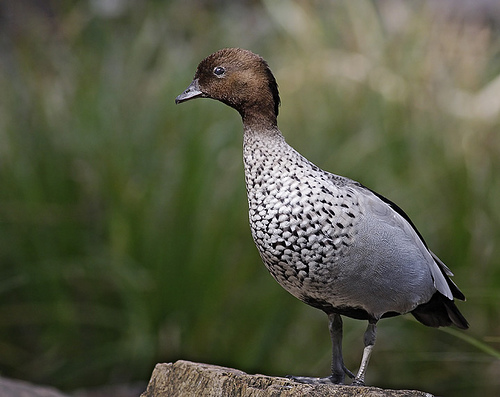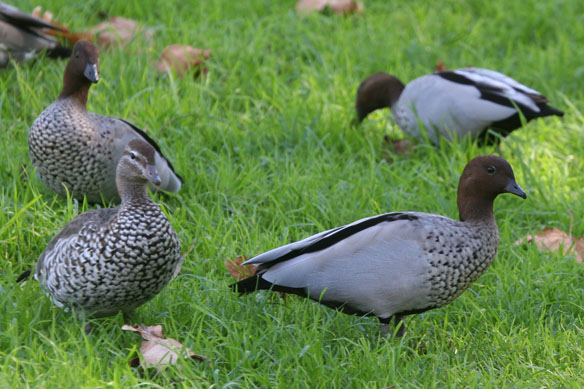Colours
Distinguishing features
It looks like a small goose, and feeds mostly by grazing in flocks.
The male is grey with a dark brown head and mottled breast. The female has white stripes above and below the eye and mottled underparts. Both sexes have grey wings with black primaries and a white speculum. Juveniles are similar to adult females, but lighter and with a more streaky breast. (Wikipedia)
Size
- From 40 cm to 50 cm (Length of specimen)
Wingspan
- Wingspan data is not yet available.
Synonyms
Distribution
Distribution and habitat preferences
The Australian Wood Duck is widespread in Australia, including Tasmania. The Australian Wood Duck is found in grasslands, open woodlands, wetlands, flooded pastures and along the coast in inlets and bays. It is also common on farmland with dams, as well as around rice fields, sewage ponds and in urban parks. It will often be found around deeper lakes that may be unsuitable for other waterbirds' foraging, as it prefers to forage on land. (Wikipedia)
Behaviour
It nests in Eucalypt hollows often some distance from water.
Diet
The Australian Wood Duck eats grasses, clover and other herbs, and occasionally, insects. It is rarely seen on open water, preferring to forage by dabbling in shallow water, or in grasslands and crops. (Wikipedia)
Web resources
References
- Simpson, K., N. Day and P. Trusler (2004). Field Guide to Birds of Australia: 7th Edition Penguin Group (Australia), Camberwell, Victoria.


